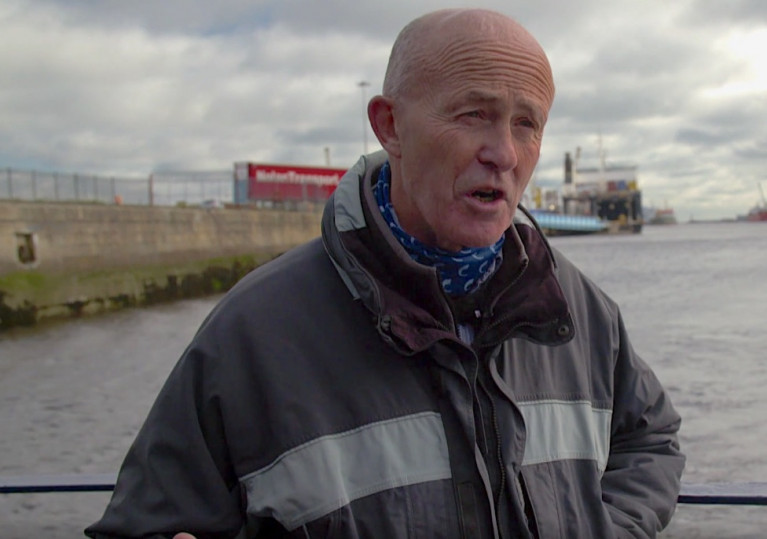Dublin Port Chief Executive Eamonn O'Reilly told RTE One's Nationwide programme this week that the capital's port will reach capacity in 2040.
The CEO said the port, that handles almost 50% of all trade in the Republic of Ireland, faces a huge challenge to build infrastructure to cope with the growth in cargo on the River Liffey over the next 20 years.
As Afloat previously reported details of the port's plan for its future are contained in its masterplan.
O'Reilly's interview featured in RTE One's Nationwide programme on Wednesday evening and can be reviewed on the RTE Player here (scroll to 11.45 on the timeline).
O'Reilly said these were 'extraordinary times' in the history of the port. By 2040, the port will have reached its maximum capacity, some 333 years since the first port authority in Dublin was established.
Dublin Port Heritage zone
O'Reilly also said the port wasn't just focussed on building port infrastructure but is also preparing to open the port to the public.
"We cannot just have the port as an industrial zone and ignore the local community".
As a result, a two-acre site within the port is being transformed into a heritage zone so Dubliners can come down to the Port area and enjoy the experience of having a living working port in the heart of their city.
The Port is also constructing a greenway on the north side at the River Tolka estuary where a four km cycle lane will be provided for leisure purposes.
Elsewhere in the programme, Dublin Port Heritage Director Lar Joye gives a guided tour of port operations as part of the recent Open House architecture festival.
 Lar Joye, Dublin Port Heritage Director Screenshot: Nationwide
Lar Joye, Dublin Port Heritage Director Screenshot: Nationwide
The tour takes in a trip around Alexandra Basin and Joye observes the MV Shingle, a ship seized in 2014 over €14m worth of tobacco that still awaits its breakup and the Kittiwake, an old lightship that is going be restored as part of the new heritage zone.
Joye's interview can be reviewed on the RTE Player here (scroll to 2.14 on the timeline).































































